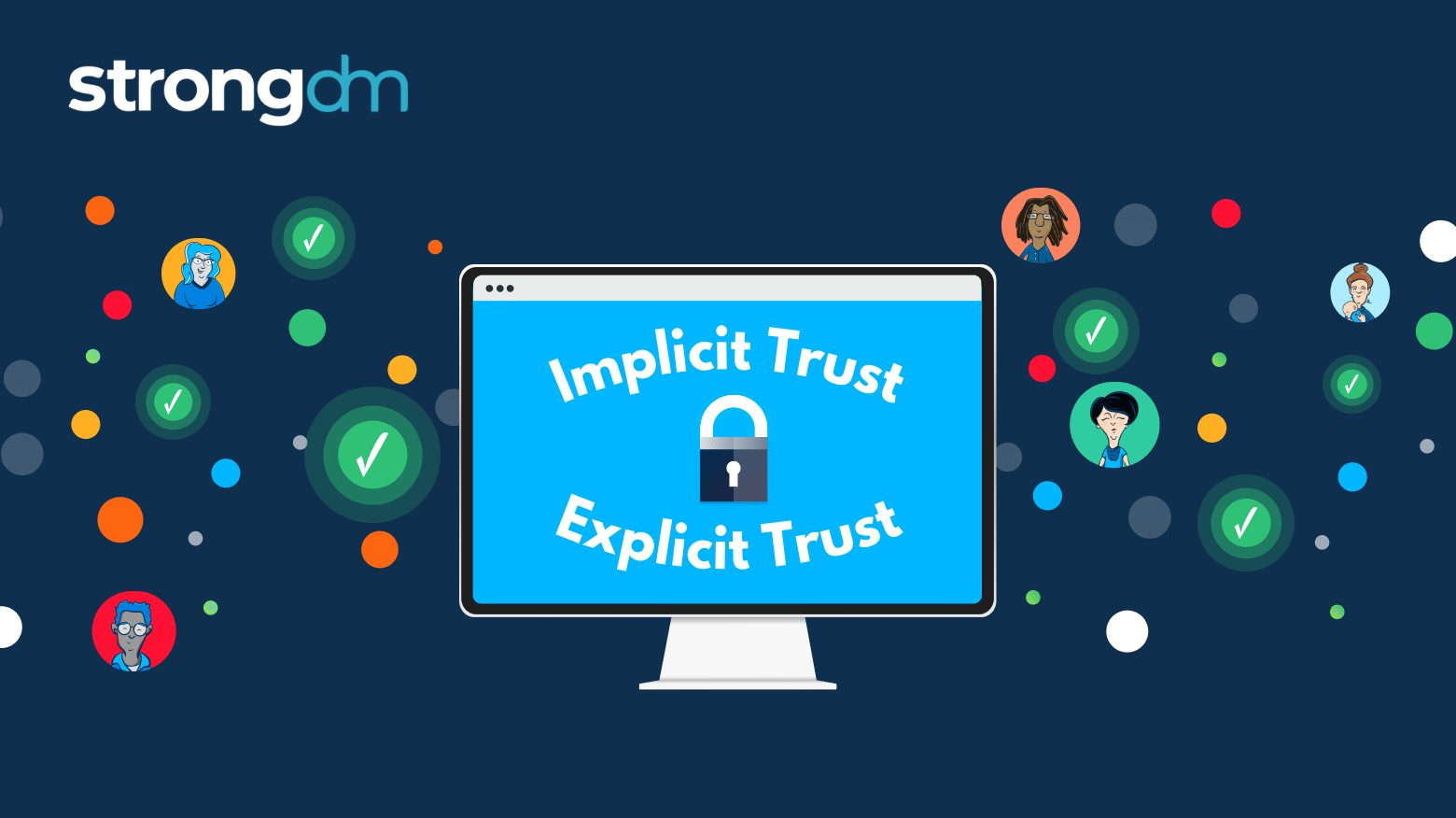Implicit Trust vs. Explicit Trust in Access Management


Written by
Dominic GarciaLast updated on:
June 25, 2025Reading time:
Contents
Built for Security. Loved by Devs.
- Free Trial — No Credit Card Needed
- Full Access to All Features
- Trusted by the Fortune 100, early startups, and everyone in between
Trust is an essential cornerstone in access management. However, not all trust is created equal. When it comes to how you approach access, two types of trust stand out: implicit trust and explicit trust.
What is Implicit Trust?
Implicit trust can be likened to an open-door policy. This type of trust grants access based on the assumption that all actors within a defined system are trustworthy until proven otherwise. That means authorization and activities are assumed to be approved with valid credentials. It also assumes access from any device or location, as well as any activity allowed by the assigned permissions are also approved.
Implicit trust models offer convenience for users because they can navigate systems with minimal friction. However, they pose significant security risks, as malicious users with access can exploit this trust to wreak havoc.
What is Explicit Trust?
Explicit trust, on the other hand, is like a bouncer at a club that verifies you should be accessing a specific system then monitors your activities to ensure they are valid and approved. This model requires each user and device to prove their identity and their need to access certain information before granting permission for access and activities. Explicit trust requires continuous authorization for every activity and access request, including verifying device, location, and if specific activities are approved.
By adopting an explicit trust model, organizations significantly reduce the risk of unauthorized access, data breaches, and internal threats. However, this model may require more resources and could potentially slow down operational efficiency due to the additional verification layers.
Implicit Trust vs Explicit Trust: A Balancing Act
Balancing implicit and explicit trust requires understanding the nuances of each model and applying them appropriately to different scenarios within your organization. While it would be ideal to implement explicit trust universally, it can be difficult to do so due to the technology requirements and resources required.
For example, certain low-risk resources within your organization might function perfectly well with an implicit trust model. However, high-risk resources that house sensitive data or that are considered critical systems should be protected with an explicit trust model.
Below is an example of how implicit and explicit trust differ:
| Implicit | Explicit | |
| Device | Every device approved by default | Each device is explicitly approved for use |
| Location | Location not considered when authenticating | Access from specific locations must be explicitly approved |
| Actions | All actions approved with the permissions | Specific actions must be explicitly approved in real time, regardless of the role assigned in a system |
The Connection Between Explicit Trust & Zero Trust
Zero Trust is a security philosophy that dictates “never trust, always verify.” Explicit trust plays a critical role in adopting Zero Trust across each organization, as it extends this philosophy to include actions taken while authenticated, and also requires that critical context–such as device used and location–are considered when allowing access and actions.
The addition of explicit trust based on user and device context, as well as real time decisions based on activities, is a natural progression of the Zero Trust methodology, and should be considered a core requirement for organizations that are implementing Zero Trust security frameworks.
StrongDM & Explicit Trust
One of the biggest challenges facing the adoption of Zero Trust and explicit trust is the ability to manage access to infrastructure and resources dynamically. This is where StrongDM comes into play. Legacy privileged access management (PAM) tools leave critical gaps in your access management strategy, such as multi-cloud, databases, and Kubernetes.
StrongDM provides Zero Trust Privileged Access Management (PAM) that seamlessly provisions, de-provisions, and monitors access in real-time, enabling you to apply explicit trust for technical users that are accessing sensitive systems.
Conclusion
In the end, both implicit and explicit trust have their roles in access management. Understanding their differences, strengths, and weaknesses can help organizations implement a more secure, efficient, and resilient access management strategy–all while they work towards universal explicit trust and Zero Trust over time.
Next Steps
StrongDM unifies access management across databases, servers, clusters, and more—for IT, security, and DevOps teams.
- Learn how StrongDM works
- Book a personalized demo
- Start your free StrongDM trial

Categories:

About the Author
Dominic Garcia, Technical Marketing Expert, has held marketing leadership roles for Silicon Valley technology companies specializing in database, data management, and data analytics solutions. As head of content marketing at Splunk, Dominic contributed to boosting the company’s market visibility and its growth from a $100M to a $1.3B company. He brings relentless creativity to the task of connecting people with technical products to improve their lives. Dominic holds a B.S. degree in Public Relations from the University of Texas at Austin. To contact Dominic, visit him on LinkedIn.
You May Also Like




